The FAA reports that at least two Alaska Airlines flight attendants became incapacitated due to fumes on Saturday’s flight 952 from Maui to Seattle.
According to the reliable Aviation Herald, the Boeing 737-800 was en route at 34,000 feet over the Pacific, approximately 300 nautical miles from Maui, when the problem occurred. The flight diverted to Honolulu, and they summoned medical personnel. This diversion was confirmed by the flight tracking service FlightAware.
It is unclear from the report whether two or more of the flight attendants reported feeling dizzy. They apparently “recovered for a bit of time, but then the symptoms returned, prompting the plane to divert to Honolulu.”
Honolulu Airport problems further aggravated the emergency situation.
While it was approaching the airport, nearly two hours after departure from Maui, the aircraft was advised to taxi to a gate at Honolulu Airport to meet medical personnel. As you know, however, gate availability and flight delays are serious problems there.
“Gate personnel had not yet arrived at the gate…The aircraft taxied speedily to the apron with emergency services in trail, who prepared to establish a triage at the gate. All 4 cabin crew received minor injuries.” What kind of injuries was unclear.
It is being reported, but we could not confirm, that the aircraft is still on the ground in Honolulu.
Cause of the incident is unknown thus far.
Others have speculated that the incident may have resulted from an issue with the plane’s auxiliary power unit. We are awaiting more information and will update you as soon as we learn more. Also, why was it only the cabin crew reporting dizziness and not the passengers? We speculate that when this happened at 34,000 feet, the cabin crew probably stood in the back galley getting ready to provide service. It’s also possible the issue started before passengers boarded the plane.
Flights must be canceled with multiple crew members incapacitated.
We understand that the aircraft would have had at least four cabin attendants on board, and if two or more became ill, that would have required the flight to be terminated. The issue appears to have impacted only the cabin crew and did not involve the flight crew.
AS 952 flight path per FlightAware.
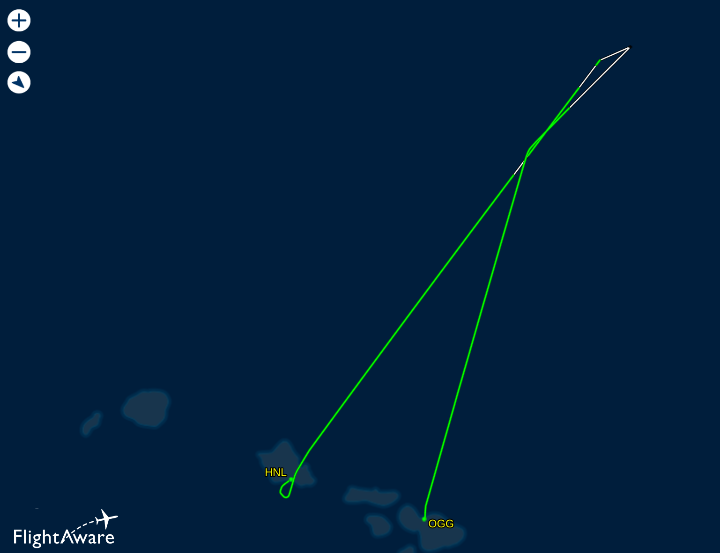

If you were on Alaska Airlines Flight 952 on Saturday, please let us know what you saw on board.
Get Breaking Hawaii Travel News
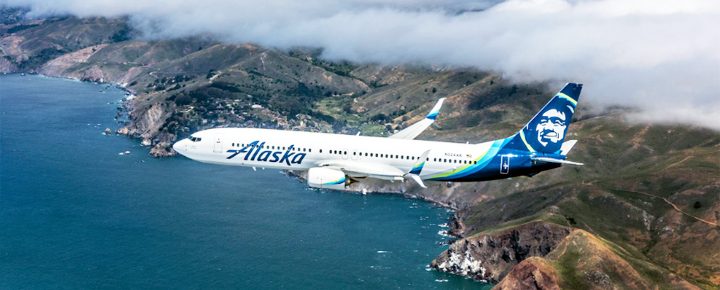

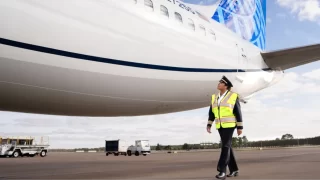
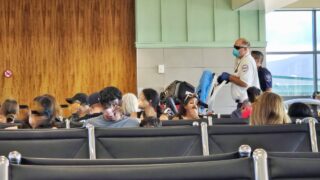
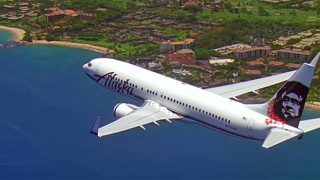

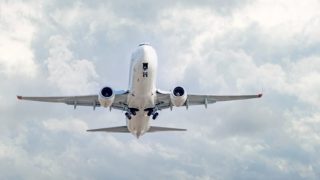
We were a party of Six on the flight in the front of the Cabin. I fell asleep before taking off. I awoke blown away to see the stewardess on supplemental oxygen and hearing f we were landing in Hawaii in Oahu instead of OGG. My party said they smelled some chemical smell, had head aches and some Reported eyes burning. We were escorted upon landing by fire trucks, police and ems. We got in a midnight and were told to stay in the airport gate until further notice. We didn’t get things sorted out until 4ish when we had to sleep. Still Haven’t been informed what we may have been exposed to. I heard it was most concentrated in The front of the plane.
These “Fume” events can contain Neurotoxins and have very serious health effects— there is help for any passenger or crew that is feeling unwell from this flight- the Association of Flight Attendants National Safety Chair- Judith Anderson has dealt with these kinds of events for over 3 decades… it’s important to get accurate information and support- if you know of someone that was on that flight and has ‘the flu like symptoms’- there Is Help.
Boeing and the aerospace industry have known since the 1950s that the breathing air supply (known as ‘bleed air’) can become contaminated with engine oil or hydraulic fluid decomposition products. Air accident departments in 12 countries have made over 50 recommendations and findings on this issue. As crews and passengers have been impaired and flight safety has been compromised the British Air Accident Investigation Branch (AAIB) twice recommended to the FAA that all aircraft should have contaminated air warning systems fitted to warn crews when the air is contaminated but the FAA has not acted on these key safety recommendations. Google ‘Global Cabin Air Quality Executive’ or ‘Aerotoxic Syndrome’ for more info.
Generally “smoke or fume events” on the ground are APU associated, but 99% of the time the APU does not run in flight. This was probably not an apu event since it was an inflight event.
As I mentioned, the “neurotoxin” you refer to is….turbin oil. The entire jet engine (including the compressor section), is lubricated with turbine oil. Often events linked to the APU are actually associated with oil leaks in the packs…the APU may be providing clean compressed air.
As a 43 year Crew Member for a Legacy Mainline Carrier- the traveling public should be aware of these ‘Fume Events”- and that some of the chemicals in the fumes may contain ‘neurotoxins’– what they believe is ‘jet lag’ could possibly be a chemical exposure. Carbon Monoxide and Neurotoxins are known exposures…. The Crew “Felt it First”- as they are working and ‘not resting’- taking in the fumes at a greater rate- The pilots are directed to put on their oxygen masks at the first report of any fumes- therefore not likely ‘to be affected’ or putting the flight ‘at risk’— Flight Attendants have no procedures to protect themselves as the pilots do- and MOST fume events are APU related…..
So sorry this has happened! My son, & I went Maui, in September! Our hearts go out to Maui, & the Hawaiian Islands, & Anyone, or anything, related! Praying for God’s Best, to Everyone!
we were on this flight, what a cluster. we were in the airport at Honolulu until 5am to get rebooked. One of the paramedics in the holding area was over heard saying “I’m not going to check all these people.” No one received any attention from the first responders except the crew. Alaska did email us a $200 voucher each for our trouble. I booked this thinking it would be better that Southwest, never again.
Only $200? We were waylaid in New York for 20 hrs due to weather and Delta paid for a hotel room, taxi to and from the airport, $200 each for both of us and gave us each a $200 voucher for a future flight with them.
weather related, they owe you nothing! Weather is something that they have no control over!
The facts are very sketchy. We need to wait for the whole story, but this sounds like a classic case of a turbine oil leak. Hot compressed air is bled off the compressor section of each engine and runs the air cycle machins to pressurize/heat/cool the cabin. If a lab seal in the system leaks, turbine oil gets into the cabin. If bad enough, it can cause a blue haze to fill the cabin, but in any amounts at all, it can cause these symptoms.
I’d bet both pilots were on 100% oxygen while the passengers were being poisoned.
Turbine oil is a known carcinogen and can cause cancer in internal organs years after exposure. Boeing is very aware of this threat and has switched to electric compressors on the 787.
Since the air is bled off before it hits the combustion section I didn’t realize this was possible. That is scary stuff right there if that is what may have caused this.
I wasn’t on the flight but after reading all of the accounts of the passengers who were it sounds very much like carbon monoxide toxicity.
If the Aircraft is 737-8Max then its a no go for me. On long haul flights its always the Boeing 747s but unfortunately they’ve stopped this. I don’t know but I felt safe on those airplanes.
My latest flight from San Francisco to London via Airbus A380 was the most comfortable flight I’ve ever had.
Story says -800 not Max.
I was in the first row on this flight. The assertion that we experienced no symptoms is patently false, as multiple passengers including myself and our party members experienced nausea, headaches, lightheadedness and dizziness.
Once the flight had landed and disembarked, the local police refused to let us leave asserting that we’d receice a dismissal which never came. No lines for rebooking, no organization, employees shifted responsibility to the police and vice versa.
When we inquired with paramedics as to what we’d been exposed to, they refused to divulge any information with their ultimatum being that if we wanted to know anything, we’d need to go to the hospital.
4 hours and no dismissal later we left. This was unprofessional and sh
There are too many instances like this where we put our faith in “professionals” and people die or get sick. I appreciate your situation. I personally would of taken my chance walking off the airplane even if it meant getting arrested . At least I’d be off the plane.
So sorry this happened, I am glad, you are doing okay! 🙏 Praying for full recovery!
I was a passenger on that plane many people aboard had burning eyes, experienced dizziness, headache and nausea. Alaska Airlines have not informed the passengers what we were exposed to. I was personally feeling Sick from the chemicals for over 2 hours.
I was on this flight. The mental effects were subtle and given that we were all trying to sleep didn’t really notice them until later. What we did notice was our eyes burning. This started early while the plane was still climbing. I remember because I thought it was probably from sweat and sunscreen getting in my eyes after a long day on vacation. I wanted to get up and go to the bathroom to splash water on my eyes but couldn’t because we hadn’t reached altitude. Later I learned that everyone else I was traveling with had the same symptoms. We were told that the problem was a leak in the HVAC system. The first thing we did was descend to 10k feet so they could turn off the air system.
I was on this exact flight, multiple passengers including myself and family had symptoms such as burning eyes, headaches, nausea, and brain fog. We were never told what toxic fumes we were exposed to although we were told it had to do with the AC unit.
I was on an Alaska Airlines flight from LA to LV, then to NY 4 years ago and the exact same thing happened. I got sick and my dog had seizures for a few years after. I have video of everything. It was the plane leaking antifreeze and it’s not the first time Alaska’s planes have done this. Alaska should be shut down.
To the best of my knowledge Alaska Airlines does not fly Los Angeles to Los Vegas and definitely does not fly Los Vegas to New York. Not sure how your recollection is remotely plausible. And shouldn’t Boeing be mostly to blame if toxins can be pumped into the cabin of the airplane? Granted, a maintenance issue could be a consideration but shouldn’t the company who built the plane be considered for liability?
What antifreeze are you referring to?
Shockingly, this is a common occurrence says my flight attendant sibling…
Probably those two dudes from Dallas siting in aisle 27…too much chili and baked beans at the rodeo the night before.
Can a plane reach 34,000 in 300 nautical miles?
Yes easily
Very strange that none of the passengers or pilots were affected.
There’s too little info to know for sure right now, but I’m wondering if hypochondriac flight attendants caused this diversion for no reason. Mass psychogenic illness is definitely a thing (for example US Embassy workers in Cuba complaining of “Havana Syndrome,” which seems to be totally psychosomatic).
Talk to any pilot and they will tell you that flight attendants are very prone to having specious health concerns, like about cruising at 41,000 feet vs. 33,000 feet, even though the cabin air pressure level is the same.
I was one for 41 years and not really buying what you’re trying to sell.
Actually I was on this flight, and passengers were also feeling the effects just to a lesser extent. The plane decended to 10,000ft and shut off the AC. I was in seat 1D, there was an attendant on oxygen sitting up front.
They probably aren’t reporting on passengers having symptoms because no one was asking us if we had symptoms. Everyone I knew on the flight had burning eyes, headache, and felt mentally fuzzy.
Our first hand experience of the event indicated otherwise. Unfortunately it seems unlikely alaska airlines will take accountability for the bungling of this emergency situation.
In opposition to the article, we experienced it first hand, with the pilots and attendants wearing oxygen masks post discovery of the incident, it seems something was wrong. Two attendants were admitted to the hospital post disembarking
Havana syndrome was proven, not a syndrome but an affect from a cause. Plenty of articles with medical study references.
Many passengers have attested here to experiencing the same symptoms as the flight attendants. Don’t know why they were dismissed by the airline.
It’s not so much that we were dismissed as the airline never asked the passengers if they had any symptoms. Many of us talked to the paramedics and emergency personnel. But they just took vitals and offered to arrange rides to the ER if we wanted. To my knowledge no one wanted to spend the rest of the night in ER except the flight attendants. Especially since our symptoms were improving or gone by that point and we had no idea what we had been exposed to so we have no way to judge the potential long term effects.
Aerotoxic.org
Please please please look it up. Will help the crew find information to help!
I personally, Do Not believe Boeing 737 of the equivalent to them by Airbus planes should be used as planes crossing the Pacific! Those planes are uncomfortable and small! And so, I wonder if they are getting the proper mechanical attention that they are expected to have? I would say no! Same goes with Southwest! But, these airlines are trying to make lots of money but not giving a lot back to the customer and that is not good! Those planes are packing passengers like Sardines! These type of planes are not good for flights over 5 hours in my opinion!
I researched a bit about cabin toxicity involving Alaska Airlines. They have had several incidents involving their Boeing aircraft cabin air that caused diversions. Also looked at another diversion with Frontier Airlines. They also use Boeing aircraft.
Funtier is all Airbus
I assure you that the aircraft are all maintained according to schedule and done so by all the applicable manuals and guidelines. I’m no fan of the 737 NG, but do not talk despairingly about my fellow mechanics. With the exception of Southwest, the commercial aircraft mechanics all take their jobs very seriously and do not cut any corners.
Your an airline mechanic? You have all that responsibility but get paid less then mechanics in other industries. I have a cousin who spent 30 years as a mechanic for major airlines and made 30% less then I do working as a mechanic at a mine.
I respect the work you do but your worth more then they pay you.
All of these aircraft are maintained in the proper maintenance intervals and per all the applicable manuals and policies. My fellow aircraft technicians and I all take our jobs very seriously.
I have been saying that a long, long time ago. If the plane doesn’t have 2 aisles, then I don’t use that plane. Even a 2 aisle plane can be a sardine can.
Anyone who lives in Hawaii would know this. And they would be real cautious about the plane they are using to go over the water.
Growing up, and as an adult, I made plenty of trips across the Atlantic and the Pacific in single aisle DC-8s and 707s. There is nothing wrong with single aisle aircraft.
Those are 4 engined aircraft. There are still a lot of people uncomfortable in two engine jets over long distances across water.
B757’s, B767’s B777’s, B787’s and A330’s are all twin engine, long range aircraft. Research the aviation term ETOPS.
People afraid of 2-engine planes flying long overseas distances probably don’t fly much. Nor do they understand what ETOPS certification is. They also probably clap every time their plane lands.
How many 2-engine planes can you recall that have crashed into the ocean in the last 20 years?
That’s because most people are bigger and fatter than people 40 years ago. Those people would be equally uncomfortable win a three-aisle wide body airplane if one existed.
Was this a 737 MAX aircraft?
Alaska doesn’t have max 8. The article say 800 meaning it’s a 737-800. Not a 737 Max8
Alaska does have Max aircraft in its fleet and recently place a large order with Boeing.
No. A 737-800. Says in the linked article.
That is very scary, makes me not want to fly anymore.
Flying is still one of the safest ways to travel. Much safer than the roads and freeways that you use to get to the airport
And, you can’t drive to the Islands! I’ll take a 737 over a 767 for any relatively short flight.
Thank you. I hate fighting for the armrest 😉